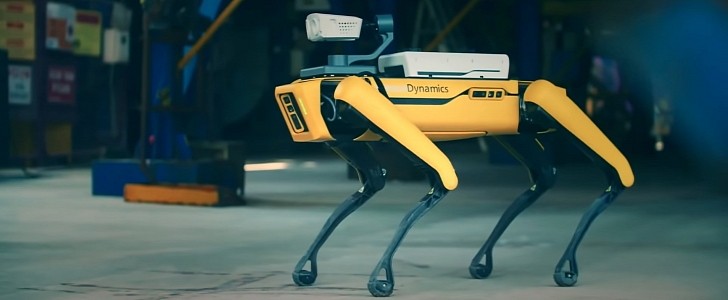While Boston Dynamics’ most popular robot, Spot, has proved its usefulness in so many ways since it was launched more than a year ago, there are still skeptical people out there with wild running imaginations, who see it as a potential Apocalypse trigger. This FCC (Federal Communications Commission) commissioner is one of them.
Brendan Carr is An American lawyer nominated by Donald Trump in 2017 to become an FCC commissioner. Carr is also an avid fan of SF movies, who let Hollywood get the best of him. In a recent Twitter post, Carr stated that he intends to propose a rule that bans robots, because he’s seen “Terminator” and “I, Robot,” and he knows how “this ends.” He also embedded a video with Spot in his tweet.
Carr detailed that if a robot dog is too large to kick over in case of an emergency, it should be banned. He also added that he is qualified to propose the rule. The fact that he watched the "Terminator" franchise and many other robotics movies was the lawyer’s main argument, adding that the flicks should be seen as Cliffnotes for robotics degrees.
A wave of disapproving comments followed his tweet, which only brought the worst out of the commissioner, who started to reply offensively to users not sharing his views on robotics. Carr even mocked a user for running a burner account for a robot dog that has gone sentient, one more reason to speed up the rulemaking.
Spot, the robot dog, was the creation of Boston Dynamics, a company that is now owned by Hyundai. Made available for the general public in 2020, the four-legged machine proved to be a real hit, suitable for a plethora of applications. Spot is now used in various fields to improve safety and productivity. So far, it has been deployed in various hazardous locations such as nuclear plants to detect radiation and substations to inspect high-voltage facilities. It was even used in military camps for combat exercises.
Carr detailed that if a robot dog is too large to kick over in case of an emergency, it should be banned. He also added that he is qualified to propose the rule. The fact that he watched the "Terminator" franchise and many other robotics movies was the lawyer’s main argument, adding that the flicks should be seen as Cliffnotes for robotics degrees.
A wave of disapproving comments followed his tweet, which only brought the worst out of the commissioner, who started to reply offensively to users not sharing his views on robotics. Carr even mocked a user for running a burner account for a robot dog that has gone sentient, one more reason to speed up the rulemaking.
Spot, the robot dog, was the creation of Boston Dynamics, a company that is now owned by Hyundai. Made available for the general public in 2020, the four-legged machine proved to be a real hit, suitable for a plethora of applications. Spot is now used in various fields to improve safety and productivity. So far, it has been deployed in various hazardous locations such as nuclear plants to detect radiation and substations to inspect high-voltage facilities. It was even used in military camps for combat exercises.







